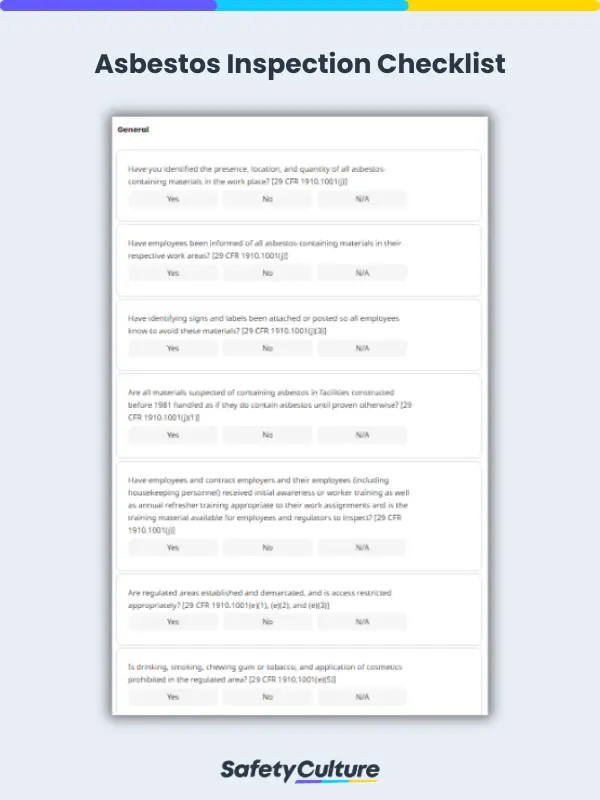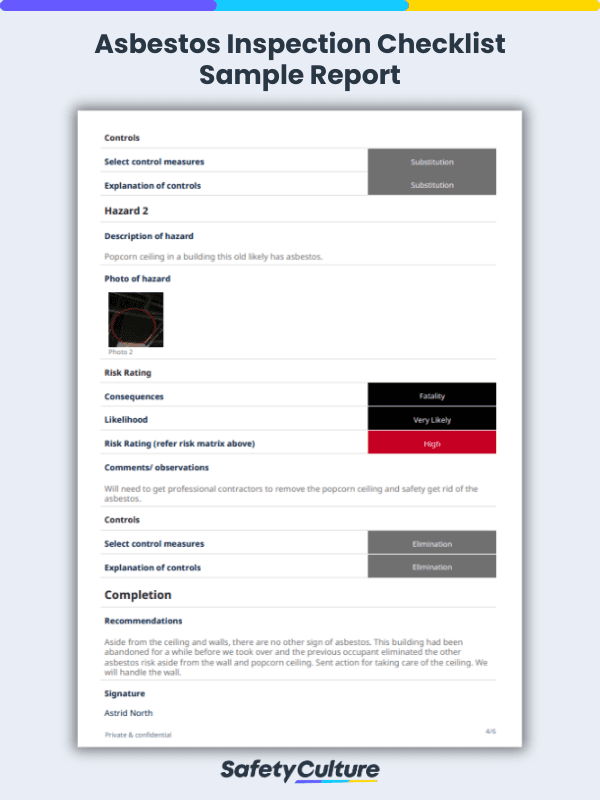What is Asbestos?
Asbestos is a material made of silicate mineral that is found in nature and shown to be composed of thin, flexible, fibers when viewed under a microscope. The properties of asbestos include resistance to fire and chemical corrosion. A durable material, the properties of asbestos proves most useful when combined with other materials and is utilized in multiple industries such as construction, manufacturing, automotive, and cosmetics.
A Brief History
From ancient times up to the present, asbestos has been widely utilized primarily as fire retardant, insulator, and strengthening material. During the industrial revolution, asbestos production and use in the US increased when it became more readily available due to the opening of commercial asbestos mines in the northern US and in Quebec, Canada.
Until a connection was made between exposure to asbestos and ill health, particularly among workers and miners who regularly handled asbestos or materials that included asbestos, it was handled with little to no protection.
It was in the 1930s when it was scientifically established that prolonged exposure to asbestos is harmful and causes illnesses such as lung cancer and a chronic disease of the lungs called “asbestosis.” Higher risk of early death among asbestos workers had been documented and by the 1940s and 1950s, more connection was found between asbestos and certain types of occupational cancers such as mesothelioma.
The hazard of asbestos exposure remains because asbestos is commonly found in buildings and structures built before the year 2000. Older homes and buildings in particular included materials that incorporated different forms of asbestos before the banning of its use began in the 1970s among around 50 countries. While some countries imposed a total ban on all forms of asbestos before the turn of the century, others like the US implemented a partial ban and regulations were put in place to control its continued use and reinforce safe handling.
A recent major controversy involving asbestos was about a case won against a company that produces talcum baby powder found to contain traces of asbestos. It resulted in almost 5 billion dollars in compensation and damages after 22 women alleged that their cases of ovarian cancer were caused by decades of use of the popular baby powder. The talc in baby powder are mined and they occur in nature where they can be in close proximity with asbestos.
Despite current knowledge on the effects of asbestos to the body, exposures still happen and symptoms from prolonged asbestos exposure can take a while before manifesting.
Legalities of Using Asbestos
There is no general ban against the use of asbestos. However, there are multiple asbestos related laws and regulations such as The Asbestos Hazard Emergency Response Act which requires educational agencies such as schools to inspect the building for asbestos and perform corrective measures to reduce asbestos exposure. The state of Virginia has a statewide asbestos inspection requirement. A portion of the building code states that no property can be demolished or renovated without proper inspection by a licensed individual and that the asbestos installation, removal, and other activities should be performed by a licensed contractor.
Additionally, It’s legal to sell a property with asbestos. Currently, it’s not required to disclose the presence of asbestos in residential and commercial buildings by federal law however some states may require this disclosure for the safety of the buyer.
Property and facility managers need to ensure that the serviced asbestos inspectors are certified by the Environmental Protection Agency.
Asbestos Hazards: Where it can be Found
The use and production of items containing asbestos is strictly regulated to help ensure that risks are taken into account and controls are put in place to avoid the release of asbestos fibers.
Everyday Items
Here are some examples of products or asbestos containing materials (acm) that can be found in these particular fields or categories:
| Construction | Roof shingles, fire-resistant walls and ceiling tiles, floor tiles, cement |
| Heat resistant items | Firefighter PPE, stoves, wire insulation, ashtray coasters |
| Automotive | Auto parts such as gaskets and valves, clutches, break pads, etc. |
| Cosmetics | Cosmetic products with talc as an ingredient |
| Education | “Popcorn” ceilings, vinyl flooring, boiler and pipe wrap insulation |
Asbestos Insulation
Another common place to find asbestos is from pipe insulations. It is considered to be one of the biggest sources of asbestos exposure throughout the 20th century and up to this day it remains as a toxic hazard in many homes and business establishments. Asbestos insulations come in different types but can be grouped into four major categories which are:
Loose-Fill Insulation
Loose-fill insulation is done by pouring onto attic floors or into hollow spaces inside walls and other building structures. It can be easily identified by its appearance: it is loose, lumpy, and has a fluffy or granular texture. Once you’ve determined that your walls or attic have this type of insulation, the next step is to determine the materials to know if you have to be concerned about asbestos. Loose-fill asbestos insulation is extremely dangerous because even the slightest of air current can disturb it and send inhalable fibers into the air.
Wrap Insulation
Old buildings with insulation coverings for pipes, ducts, and other plumbing and HVAC components often contain asbestos. It often appears as either asbestos paper or wool. Asbestos-based insulations pose major health hazards as they can become crumbly overtime and can release large quantities of asbestos dust and fibers when damaged, cut off, or replaced.
Block Insulation
Another form of insulation that may involve asbestos is block insulation. This is done by gluing a slab of insulation blocks or boards. Block insulations containing asbestos were known as asbestos wall insulation.
Spray-on Insulation
This type of insulation was developed to simplify the process of applying insulation and fireproofing materials to ceilings, walls, and structural beams. Spray-on insulation is commonly found on commercial buildings where ceilings are coated with a somewhat cement looking material. Unfortunately, for this type of insulation most spray-on products contain asbestos. This type can be damaged easily and releases a cloud of asbestos fibers into the air.
How to Protect Ourselves from Asbestos Exposure?
With the presence of asbestos in everyday items, laws were implemented to protect workers as well as the general public by regulating the use and production of items with asbestos. Here are some steps to help protect ourselves against asbestos hazards.
1. Promote awareness
As manufacturers are not required to put a warning label if products contain less than 1% of asbestos or are designed to prevent the release of harmful asbestos fibers, we should be proactive in being aware of items that usually contain asbestos and follow manufacturer’s recommendations on the use of the products to avoid the potential unintended release of asbestos and other harmful materials.
The proper use of older homes and buildings should also be taken into consideration to avoid damaging building materials that may contain asbestos.
2. Conduct workplace risk assessments
When a new product, equipment, or material is being introduced to the workplace or incorporated in work processes, it is important to conduct risk assessments to identify potential hazards and come up with control measures.
Asbestos Risk Assessment Template
Safety officers can use this risk assessment template to determine workplace hazards that may include asbestos and come up with safety measures to protect the employees from health risks as well as the environment from asbestos contamination. This risk assessment includes a risk matrix to help formulate control measures based on the hazard found.
3. Provide proper training
For years workers were exposed to asbestos with little or no protective gear which then led to long-term diseases and death. Armed with the current knowledge on the proper handling, processing, and disposal of asbestos, workers should be provided with the right PPE to protect them from asbestos fibers and should undergo training on how to safely handle asbestos.
Training Feedback Form Checklist
Use this training feedback form to evaluate training sessions and gather feedback from trainees regarding the training program, facilitator, and training facilities. This checklist can help ensure training programs concerning asbestos are clearly defined and contents are relevant to the employee’s role. Use the information gathered to further improve training and worker competency.
4. Comply with regulations and industry standards
Asbestos can contaminate the air, soil, and water when it’s not properly handled. Several regulations were put in place to control asbestos production, use, and disposal as well as mitigate any adverse effects that come with asbestos contamination. Non-compliance with regulations will not only potentially impact brand reputation and penalize a company with heavy fines but also jeopardize the long-term health and safety of employees and the general public.
Managing Asbestos Checklist
Use this asbestos checklist to promote awareness on handling materials and working within buildings that potentially have asbestos. Ensure that the inspector is certified for asbestos inspection.
Asbestos Safety Management Checklist
This converted checklist seeks to confirm asbestos identification and risk assessment, asbestos register, communication, cleanup, etc. All SafetyCulture (formerly iAuditor) templates can be edited to better fit the needs of your business in protecting employees from asbestos.
5. Reinforce safety through inspections
Regular inspections can help ensure that the workplace continues to be safe and stay compliant with safety regulations. Any non-compliance found should be reported and immediately corrected to contain further health risk.
Create Your Own Asbestos Safety Checklist
Eliminate manual tasks and streamline your operations.
Get started for FREEAsbestos Inspection Checklist
Following this asbestos inspection checklist, identify the presence of asbestos in the workplace and check if employee practices on handling asbestos complies with OSHA.
Given the restrictions implemented on the use of asbestos and manufacture of products that incorporate its different forms, this inflammable and durable material continues to be useful and present in many items we encounter daily. Awareness of the long-term health risks associated with exposure to asbestos and knowledge of the proper handling and use of equipment and materials that contain it can help promote safety and prevent contracting avoidable long-term diseases.
Asbestos Risk Assessment PDF Report Sample
This asbestos risk assessment PDF report example includes failed items and created response actions. It also provides other necessary details such as date, time, name of inspector, and location. Other key information are the instructions, risk matrix, hazards, and the pictures that serve as photo evidence.
Get Started With the SafetyCulture Asbestos Safety Tool
SafetyCulture is a powerful mobile software used in multiple industries to promote workplace safety and compliance with regulations. From conducting asbestos risk assessments, to internal audits, and scheduled inspections, SafetyCulture helps safety officers and operations managers act on urgent issues and reinforce workplace safety. Information gathered in real-time can help identify areas for concern and formulate training materials for continued process improvements in the company.





